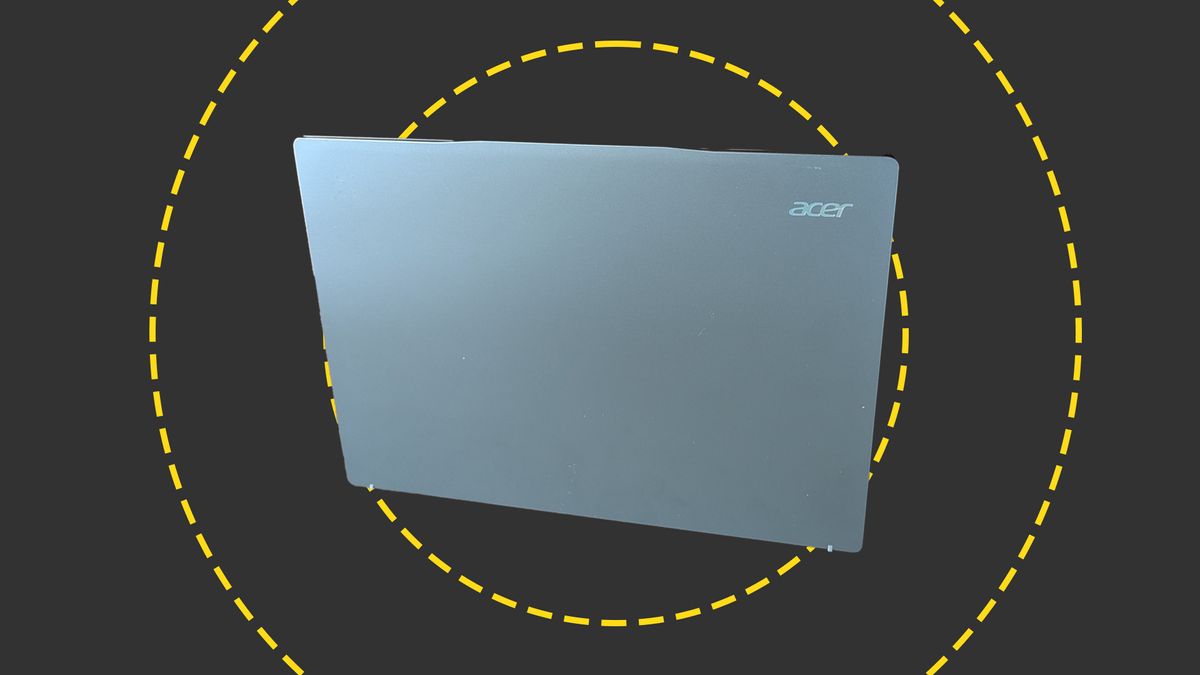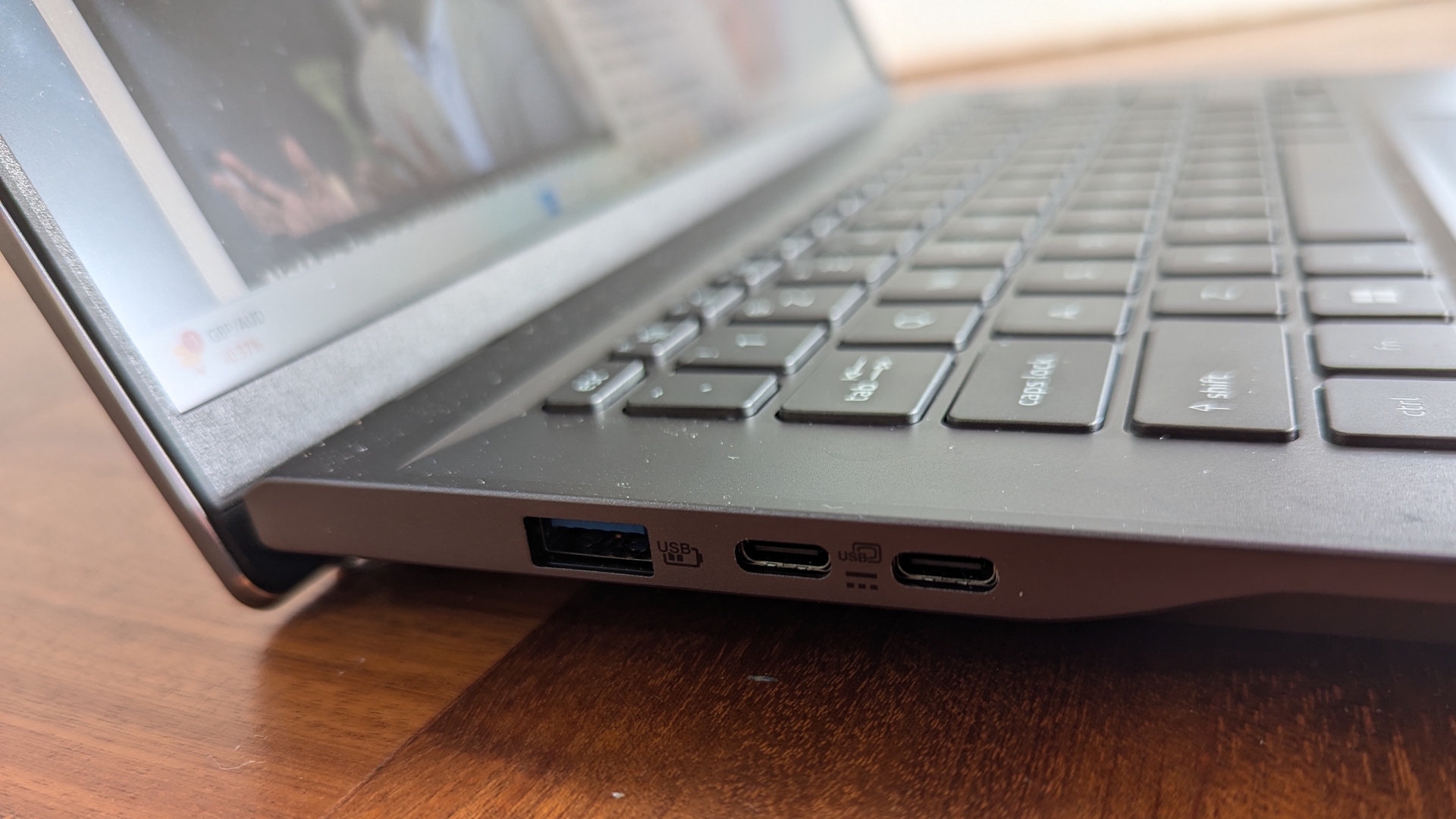Acer Swift 14 AI review

While Microsoft’s Copilot+ PC initiative hasn’t been an unqualified success, Qualcomm’s Snapdragon X Elite chips have definitely proved their worth for business. More performance than Intel’s Core Ultra 7 CPUs but with vastly superior battery life? What’s not to love about that?
Yet the Snapdragon X Elite might not turn out to be the biggest star of the new ARM-based architecture. Based on its debut in this Acer Swift 14 AI, the entry-level Snapdragon X Plus could be every bit as exciting. It’s speedy, battery life is stellar, and it helps the manufacturers shave a little extra off the price. If that puts Qualcomm’s energy-efficient, AI-ready tech within the reach of more businesses, that can only be a good thing.
Acer Swift 14 AI: Design
The hardware inside might not be so familiar, but the physical design sticks close to the template set by previous Swift laptops, with a carefully sculpted aluminum chassis in a good-looking gunmetal finish, the seams between the keyboard surround, and the baseplate hidden underneath. At 14.9mm thick it’s not as slim as the Microsoft Surface Laptop 7, but then it’s a larger 323 x 226mm device with a larger 14.5in display, weighing in at 1.36Kg. It might be too much for some highly mobile workers, but it’s a good compromise for anyone working part of the time in the office and part of the time at home. And while there’s more flex in the lid than we’d ideally like, it feels otherwise very robust.
Given the fact that it’s not as slim as some alternatives, you might be mildly disappointed by the connectivity on offer. On the left you have a single USB 3.2 Type-A port and two USB 4 Type-C ports. On the right, there’s another USB 3.2 Type-A, along with a 3.5mm audio out. One of the two Type-C ports is required for charging, when you need it, and you’ll need the other if you want to connect to an external monitor, as there’s no HDMI out. Still, there’s nothing missing that an inexpensive USB Type-C dock couldn’t fix, and with Wi-Fi 7 and Bluetooth 5.4 onboard, you can handle networking and peripherals wirelessly.
There’s plenty to like about the Swift 14 AI’s chiclet keyboard. Acer has mostly aced the layout; most of the important function keys are full-sized, bar the left Ctrl, Fn, and Alt keys, and they’re also well-spaced out. The feel is light but with some useful tactile feedback as you press and then release, and it’s very quiet in operation. However, while there’s no wobble in the deck the keys can sometimes tilt slightly as you’re typing, and we’re not big fans of having a Power button/fingerprint reader in the top-right corner where you’d normally expect the Delete key. Still, we’re talking minor niggles rather than anything that would seriously hinder work.
The touchpad isn’t quite as good. It’s nice and smooth and very sensitive to track, but we found it sometimes missed single finger taps to left-click, while the physical click mechanism needs a bit too much force low down the panel to actuate. At the same time, I found it wasn’t great at ignoring a brush of the palm, and would inadvertently switch to the Task View. After a few hours, we found ourselves using a Bluetooth mouse instead, which is never a good sign. It also has a slightly weird gimmick, where the symbol in the top-right corner lights up while you’re accessing certain AI features. For business users this is going to be more of a distraction than anything else. Luckily, it can be disabled.
Acer Swift 14 AI: Display
The Swift 14 AI uses an unusual 14.5in screen with a 2560 x 1600 resolution and a 16:10 aspect ratio. This size and resolution actually makes a lot of sense, giving you noticeably more desktop space for multi-tasking than a standard 14-inch screen, but without the bulk that comes with larger 15.6in and 16in displays. It says a lot that we had to measure before we felt sure it wasn’t larger than it is.
It’s IPS rather than OLED, which puts a limit on the kind of contrast and rich color that you can expect, but it’s a decent IPS panel. We measured the maximum SDR brightness at 381cd/m2, and the screen can reproduce 98.6% of the sRGB color gamut and 75.8% of DCI-P3. Color accuracy is respectable, with an average Delta E of just 1.43. For professional graphics or design work, you’d want stronger specs, not to mention deeper blacks – the blacks on offer here look more like a dark grey – but it’s great for productivity apps, entertainment, and light creative use.
Acer Swift 14 AI: Performance
Qualcomm’s Snapdragon X Elite CPUs have won a lot of hearts and minds through their superb multithreaded performance and excellent energy efficiency, even if compatibility issues remain with some applications. Still, the majority of applications that businesses use every day are now available in ARM64 variants, including the entire Microsoft Office suite, the Edge, Chrome and Firefox browsers, and Slack. Most of what’s left will run under Microsoft’s Prism emulation layer.
But how does the entry-level Snapdragon X Plus hold up? Well, better than you might expect. In fact, in Geekbench 6’s single-core performance tests, the Swift 14 AI is actually faster than the Microsoft Surface Pro 11 and HP Omnibook X, scoring 2432 to 2289 and 2315 respectively. And while we’d expect to see a drop in multithreaded performance, as the Plus has either 10 or 8 cores to the Elite’s 12, it’s not actually that huge.
The 10-core X Plus X1P-64-100 in the Swift 14 AI scores 13029 in Geekbench 6’s multicore test to 13134 from the Surface Pro 11 and 12585 from the Omnibook X, both of which are packing the 12-core Elite. Cooling and storage have a part to play here, and the Swift 14 AI’s score still puts it behind the 14337 we saw from the Asus Vivobook S15. Yet even in the Cinebench 2024 rendering test the Swift AI 14 delivered good results: 809 to 802 from the Surface Pro and 808 from the Omnibook X14.

In other words, you don’t lose out much by opting for the Swift 14 AI. It feels fast in everyday use. It can handle demanding applications. You can rack up tabs on your browser without feeling any hint of slowdown.
3D performance is a little underwhelming, with the Swift AI 16 scoring 1851 in the 3DMark TimeSpy test to 3725 from the AMD-powered Asus Zenbook S16 and 4329 from the Intel Lunar Lake-based Asus Zenbook S14, but the Snapdragon X Elite laptops are no better in this area. What’s more, the 45TOPS Neural Processor in the Snapdragon X Plus is in no way inferior to the 45TOPS NPU in the Snapdragon X Elite. Where applications support local AI processing, the Swift 14 AI can run the components involved at a decent lick.
Meanwhile, the Swift 14 AI still triumphs where the HP Omnibook X 14 and Surface Pro 11 did before it: battery life. Running HD video at a brightness of 170 nits, the Swift 14 AI survived 19 hours and 36 minutes of playback, putting it ahead of both the aforementioned Snapdragon X Elite machines. You could argue that Acer has hedged its bets by fitting a massive 75Whr battery, but the result is the same. If you’re looking for a Windows PC that can get you through a couple of days without a recharge, look no further.
Acer Swift 14 AI: Is it worth it?
The Swift 14 AI is an impressive showcase for the entry-level Snapdragon X chip. There’s surprisingly little impact on performance and it’s clearly energy-efficient; battery life doesn’t get much better on Windows than this. The laptop has a few weak areas, particularly the touchpad, the webcam, and the sound, but the screen, keyboard, and overall connectivity are up to scratch, and the overall package is good-looking, highly usable, and robust.
It’s not quite a slam dunk on value, as at £1199 inc VAT it’s going up against devices like the HP Omnibook X and Dell Inspiron 14 Plus that ship with the Snapdragon X Elite. Luckily, it brings some other advantages, like a fast 1TB hard drive and a brighter, higher-resolution screen. Throw in that awesome battery life, and it’s a compelling, well-rounded option both for small businesses and some larger firms.
Acer Swift 14 AI specifications
| Display | 14.5-inch 2,560 x 1,600 IPS, 120Hz refresh rate | Row 0 – Cell 2 |
| CPU | Qualcomm Snapdragon X Plus 3.4GHz | Row 1 – Cell 2 |
| GPU | Qualcomm Adreno | Row 2 – Cell 2 |
| RAM | 16GB LPDDR5X | Row 3 – Cell 2 |
| Ports | 2x USB4 Type-C, 2x USB 3.2 Gen 1 Type-A | Row 4 – Cell 2 |
| Storage | 1TB PCIe4 SSD | Row 5 – Cell 2 |
| Connectivity | Wi-Fi 7, Bluetooth v5.4 | Row 6 – Cell 2 |
| Weight | 1.36Kg | Row 7 – Cell 2 |
| Dimensions | 322.6 x 226 x 14.9mm | Row 8 – Cell 2 |
| Battery Capacity | 75Wh | Row 9 – Cell 2 |
| Operating System | Windows 11 Home | Row 10 – Cell 2 |
Source link

